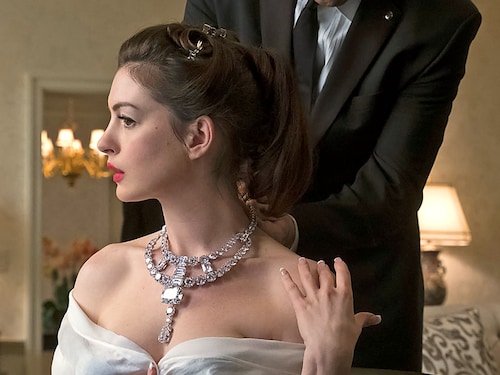All that glitters is no longer gold
Forbes India's Luxury Special looks at the new face of extravagance, driven by a generation that's rewriting all the rules


Anne Hathaway (left) wears a replica of a $150-million Cartier diamond necklace in Ocean’s 8 it was originally made for the Maharaja of Nawanagar
When the snazzy ocean’s 8 trailer debuted this summer with its stellar all-woman cast, a sumptuous Indian connection reflected some of its spotlight. Turns out that the hero of the film and subject of the grand heist, a resplendent $150-million Cartier diamond necklace, lived its first life as a bespoke piece made for the Maharaja of Nawanagar (now Jamnagar), back in 1931.
The Maharaja is said to have struck up a fond friendship in the 1920s and ’30s with Jacques Cartier, who designed the ceremonial piece himself, described as ‘the finest cascade of coloured diamonds in the world’. While the necklace was dismantled over the years to make smaller pieces, the film shows actor Anne Hathaway donning a dazzling replica of this storied ornament—resized to fit a woman’s neck, of course.
This intriguing history is testament to the fact that in the early 1900s, a section of India lived comfortably dipped in opulence—flying down the finest artisans from the poshest European companies to craft customised items that hold legacy even today. How Indian Maharajas and Maharanis contributed to the global luxury market has been adequately documented, but now, in today’s India and much of the world, a new M-word is calling the shots. That over-used word that marketers are still scrambling to fully understand, and the one that purists love to hate: Millennials.
Forbes India’s Luxury Special unravels just what is driving the exploding luxury industry in the country today. India is home to a large chunk of the world’s uber-rich entrepreneurs, the youngest of whom is Oyo Rooms’ Ritesh Agarwal, a peachy 24. This growing group of young, restless consumers of luxury has a high propensity to spend money, but rather differently from previous generations.
An expressive trend is what experts call the ‘sneakerisation’ of the luxury industry. The once-utilitarian pair of sneakers is now finding its feet everywhere, from runways to red carpets, fuelling an athleisure flurry that’s got brands like Gucci, Chanel and Christian Louboutin to dump their pumps and invest in making unique, comfy pairs of kicks. These premium, embellished, limited-edition pairs can set you back by $10,000. Business consultancy EY says sneakers is the fastest growing category in fashion and a big driver of the luxury shoe business. In fact, global sales of sneakers rose by 10 percent to almost $4 billion last year, outperforming a 7 percent rise in handbags, according to consultancy Bain & Co.
“After many seasons of comfortable shoes, it will be hard to bring women back on heels,” Federica Montelli, head of fashion at Milan’s la Rinascente department store, told Reuters in May.
So there you have it—a fundamental change in the very definition of luxury, driven by a new audience with new rules, and, in many cases, new money. Read Rajiv Singh’s story on Big Boy Toyz, an online marketplace for pre-owned luxury cars. These cars—Bentleys, Ferraris, Maseratis, and Cadillacs—are second-hand but are becoming hugely popular, at costs that range between ₹50 lakh and ₹4 crore. In almost 40 percent of their sales, customers don’t even come to stores for inspection—it’s enough for them to see photos on the website, and pay online.
In another piece, Singh analyses how the next wave of luxury growth in India will come from its smaller towns—Jabalpur, Dehradun, Coimbatore and Bhubaneswar—thanks to rapid urbanisation, entrepreneurship, and propelled by aspirations created by digital and social media. Already, for every unit of a costly night serum from luxury ayurvedic skincare brand Kama Ayurveda that sells in Delhi, three units are bought in non-metros like Bhatinda.
This is also a generation that collects experiences, not just things. Read Manu Balachandran’s story on how even Indian hospitals are offering patients Rolls-Royce rides and five-star suites, and Harichandan Arakali’s piece on luxury hotels swapping white-gloved butlers for robots who deliver laundry and room service. In my piece, learn about how travellers can get veritable ‘Instagram butlers’ to follow you around on your holiday, teaching you about lighting, angles and lessons on upping your selfie game.
The future of luxury is here, and it is, by all standards, a wee bit bizarre. But it’s never been more exciting.
First Published: Oct 11, 2018, 13:00
Subscribe Now